KTM’s 2017 ADV Range: The Suspension
Take a 200kg motorcycle into off-road terrain, and the first shortcoming you’ll notice is its suspension. That’s why KTM has focused so much attention on upgrading the WP fork and shock in its 2017 Adventure models. Let’s take a more detailed look at these upgrades with KTM Australia’s Motorsport & Technical Services Manager, Rob Twyerould.
Large-capacity, dual-purpose bikes might not look at home in an off-road environment, but these things are actually surprisingly capable. They have no shortage of power. Their sophisticated electronic aids are incredibly effective. Their brakes are more than up to the task. And they’re more agile than their Clydesdale-like physique would suggest. But – and this has been a big but for a few years now – the fork and shock on these bikes soon find their limits when you hit any decent jump or obstacle. In other words, the suspension package has traditionally been the weakest link in these machines’ off-road abilities.
Acknowledging that their 1190 Adventure R was not immune to this reality, KTM’s new-generation Adventure R models – the 2017 1090R and 1290R – come with major upgrades to both fork and shock. Yes, these all-new bikes get sweeping changes to engines, ergos and electronics packages, but it’s the improved suspension performance that most differentiates the 2017 machines from their predecessors.
To go beyond the brochure and get a more thorough insight into these suspension upgrades, we sat down with KTM Australia’s Motorsport & Technical Services Manager, Rob Twyerould, and asked him to articulate the changes.
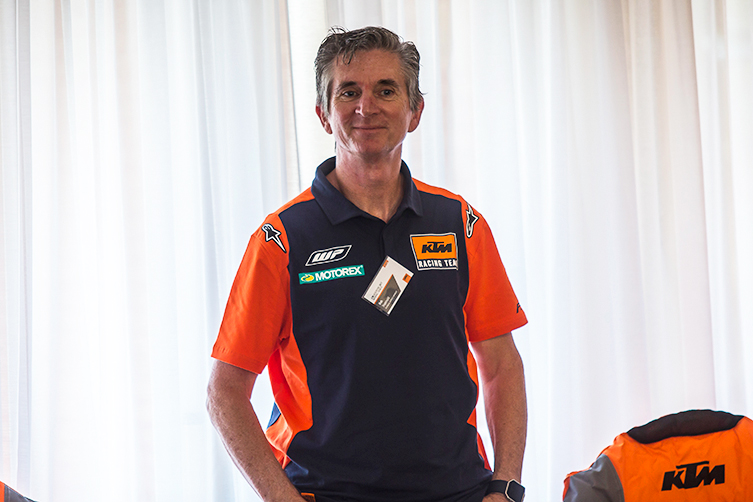
Looking back at KTM’s Adventure models – from the 950 Adventure in 2003 onwards – what have been the major changes to the bikes’ suspension packages?
RT: Well, right from in the early days, the 950 and 990 models ran WP’s 48mm open-cartridge fork. The bikes have retained that same diameter fork ever since, but there have been several changes to the internal componentry, springs and damping specs in that time. Remember also that, from the 2013 1190 models onwards, the steel trellis frame has also received strengthening mods – mainly around the upper shock mount – to complement the suspension performance and to accommodate the different engine dimensions.
The 990 Adventure was widely regarded as being very capable off-roader.
Yes, it was. And it’s probably fair to say that the 990 was more capable in off-road terrain than the 1190 Adventure R that was first introduced in 2013.
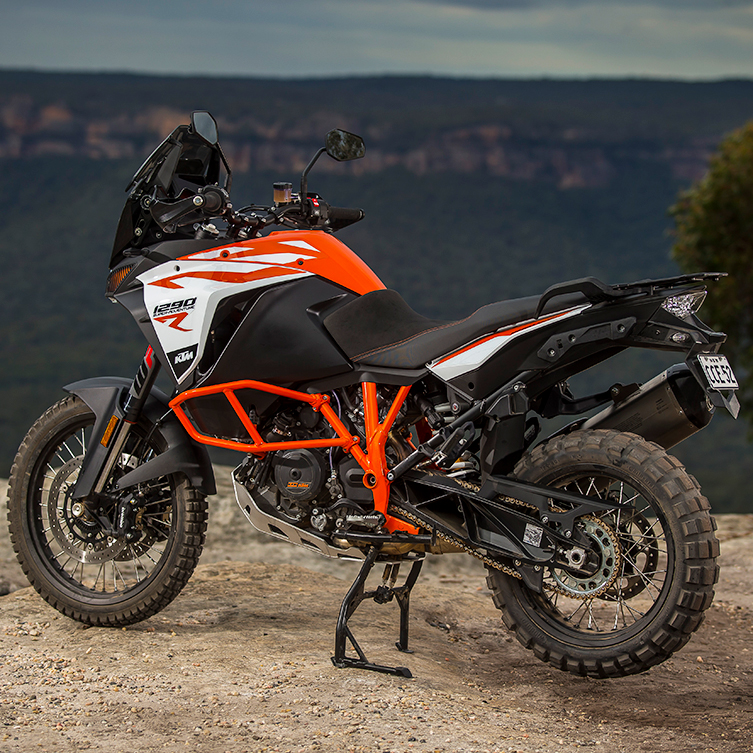
Looking back, what happened with that first iteration of the 1190 Adventure R?
I think it was a classic example of developing a bike for one market at the expense of another. From a design perspective, KTM thought riders would use the bikes to tour, rather than take them off-road. And the off-road testing that the bikes were ‘subjected’ to didn’t get much more extreme than reasonably smooth dirt and gravel roads. That makes total sense for the European market – where off-road riding is very limited – but not for Australia. In Australia, guys who buy a bike with an upright riding position and big fuel tank see it as a Dakar-style machine and want to ride it in the dirt, and not so much on the bitumen. The engine and electronics package on the previous 1190R model was very capable, but for guys who wanted to do some serious off-road work on the bike, the suspension found its limitations pretty quickly and let the package down. Spring and damping upgrades between 2013 and 2016 improved the 1190R’s off-road performance, but nowhere near as much as the step forward we’ve seen on the 2017 1090R and 1290R, which get an all-new WP PDS2 shock absorber and significantly modified internals in their WP 48mm forks.
The 1290S, however, retains the same fork and shock it used previously – with the semi-active electronic suspension, right?
That’s correct. Only the R models got the major overhaul to their suspension for 2017. From a suspension point of view, the 1290S runs a completely different platform, which saw a big upgrade a year ago. It has a less travel and a lower seat height and offers a very different ride to the R models. The S model’s semi-active electronic suspension uses a SCU (Suspension Control Unit) with stroke sensors and accelerometers to detect the speed and size of the compression and extension movements of the fork and shock, and changes the damping in real time according to those conditions. The SCU (which is completely separate to the ECU) is one of seven individual control units used for different components. Aside from the SCU, you’ve got a MCU (Main Control Unit), TPMS (Tyre Pressure Monitoring System), a Headlight Control Unit, an EMS (Engine Management System), the Instrument Cluster, and Light Control Unit.
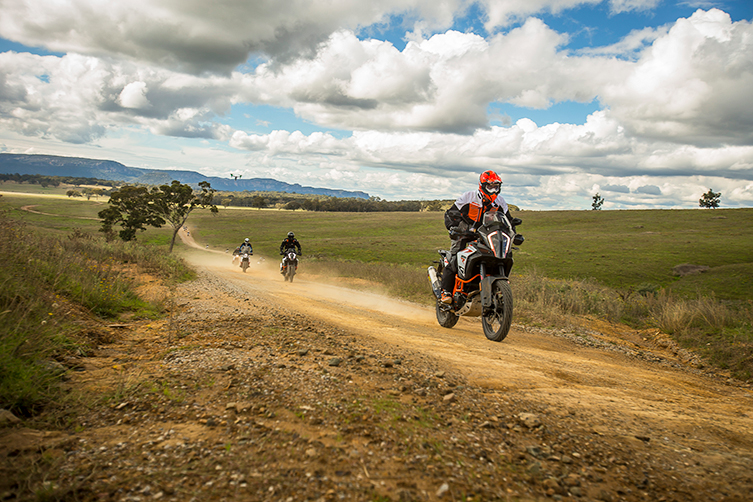
Okay, so let’s get this straight. For 2017, the off-road “R” designation has been applied to the 1090R and, for the first time, the 1290R. Correct?
That’s right. I suppose the best way to look at it is that the discontinued 1190R has been replaced by the 1290R, while the discontinued 1050 has been replaced by the 1090R, creating the most off-road capable bike in the 2017 range. Both the 2017 1090R and 1290R get same upgraded fork and shock components, but there are subtle differences in the damping specs used for each capacity.
Let’s start with the fork. What are the major differences between the fork used in the 2016 and 2017 R models?
The main thing with the fork on the 2017 1090R and 1290R is that it has borrowed the hydro-stop technology directly from fork used on KTM’s range of EXC and EXC-F models, the 48mm Xplor fork. That hydro-stop – which is, if you like, the bottoming cup that’s positioned on top of the damping rod – is now longer and sealed to generate much-improved resistance to bottoming. Previously, when the spring guide entered the hydro-stop, oil could easily be pushed out the bottom or top. With the sealed system, the oil must exit back past the spring guide, which means its flow is a lot more controlled. Plus the entry to the hydro-stop is tapered to ensure a more progressive feel toward the end of the fork’s 220mm stroke. In conjunction with this, the fork’s spring rate has been increased from 5.5 to 6.5N/mm, along with significantly upgraded valving, particularly on the compression side. The firmer spring is designed to help the fork sit up in its stroke more, while the bolstered damping helps control the fork’s action as it compresses through its travel. Note also that it’s still a split fork – the adjusters for compression and rebound are isolated on the top of each fork leg, where they can be easily adjusted without tools.
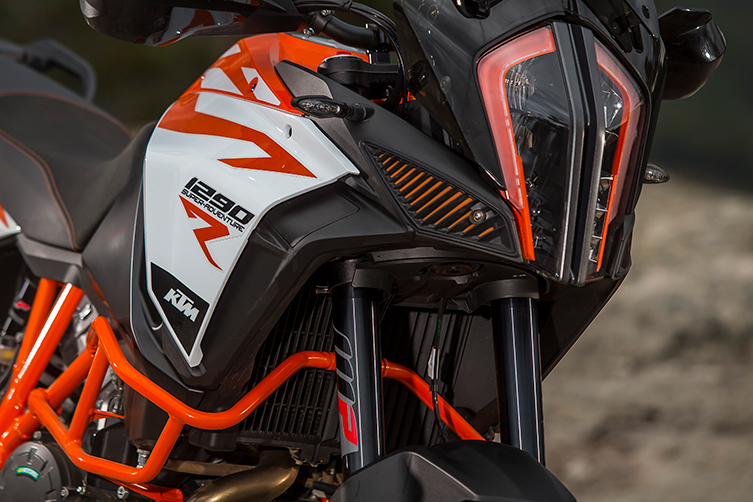
With these mods designed primarily to improve the two R-models’ off-road capabilities, is the fork’s road-going handing compromised?
No. On the contrary. The advantage of having that hydro-stop assistance with the bottoming resistance is that you no longer compromise the ride over small bumps by beefing up the spring and/or damping to prevent bottoming. In other words, the beauty of the new componentry is that the fork’s performance is better for both road and off-road applications. It’s a much more versatile fork.
And with the shock, how does the new PDS2 unit differ from its predecessor?
Well, the no-linkage system remains, but the PDS (Progressive Damper System) shock absorber is completely new for 2017. The previous shock relied on a heavy spring and single piston for damping, whereas the new PDS2 shock – which now features two pistons – has progressive damping built into it. For the initial compression movement of the shock, the second piston (which is smaller in diameter) has no influence over the damping. But as the shock moves into its travel, this second piston comes into play to assist and bolster the damping. Deeper in the travel, the second piston fits into a cup, which introduces the additional damping effect. It’s worth noting that the second piston is a floating piston, meaning that on the compression stroke, it offers damping, but on the rebound stroke, it drops out and doesn’t influence the rebound characteristics. On rebound, the second piston drops down a little, which opens up an additional gallery to reduce the rebound damping. This is important because, if you bottom the shock, you don’t want it to stick there; you want it to recover quickly and not pack down. To get the same bottoming resistance from the 2016 shock, you needed to beef up the spring and damping settings so much that you’d lose some comfort in the first part of the stroke. With the PDS2, you get better bottoming resistance and still retain that compliant ride over the smaller bumps. And that plushness is an important element for adventure-style bikes, which you tend to do longer rides aboard.
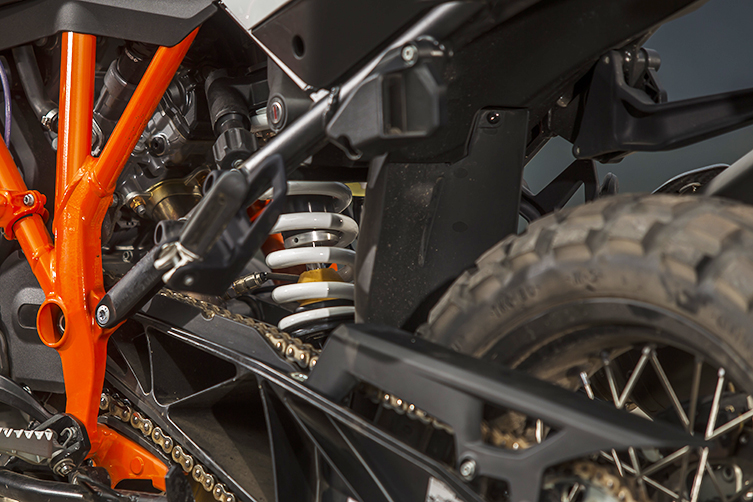
Like the fork, is the 2017 shock spring also firmer?
No. The 2017 R models both use the same 180N/mm shock spring as the 2016 1190R, but it’s difficult to directly compare the 2016 and 2017 models’ spring rates because the shock itself is completely different.
What are the biggest differences people will notice about the ride this new suspension package delivers for the 2017 bikes?
When you jump on the 2017 bikes, they feel a little taller because the suspension holds up in its stroke better. But when you ride them, both the compliance in the first part of the stroke and the bottoming resistance is much, much better than on the previous models. That’s true for both on and off-road terrain. As we discussed with all our dealers – who rode the bikes immediately after the media launch for the bikes – it’s unrealistic to think that the new fork and shock will ride like EXC models and completely eliminate bottoming. But the upgrades to the fork and shock allow you to handle much bigger bumps and jump-landings without unsettling the bike. In short, the 2017 bikes are beneficiaries of a much more versatile and forgiving suspension package. Many of our dealers have their own 1190R and ride the things very well, and they were all blown away by how the 1090R handled like a big EXC. They also felt that, while the fork and shock in the 1290R was also better than their 1190s, the 1290R didn’t give you the same confidence to hit things anywhere near as hard as you could on the 1090R. Which makes sense. Even though the 1290R gets slightly firmer damping, you have to remember that it is a 10kg heavier machine, plus it’s got additional reciprocating mass. And that will affect both its agility and suspension action.
Related Content
- KTM ADVENTURE RANGE: HOW EACH MODEL ‘FITS IN’
- KTM ADVENTURE RANGE: DESIGN INSIGHTS
- KTM ADVENTURE RANGE: THE TECHNOLOGY
- KTM ADVENTURE RANGE: ADVENTUROUS SOUL
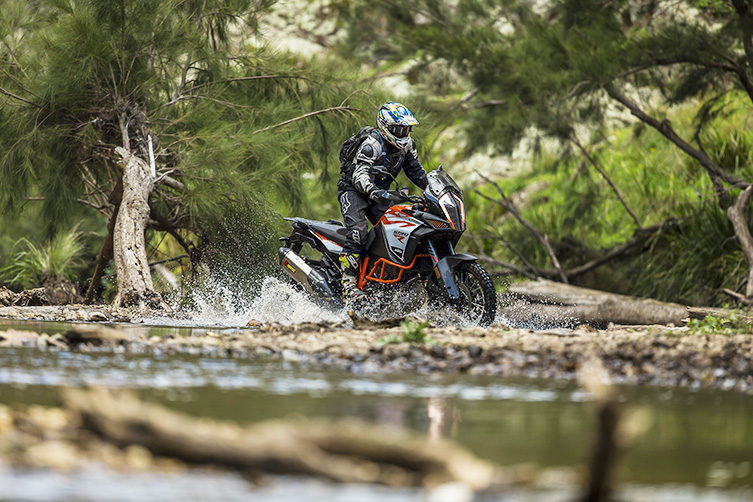
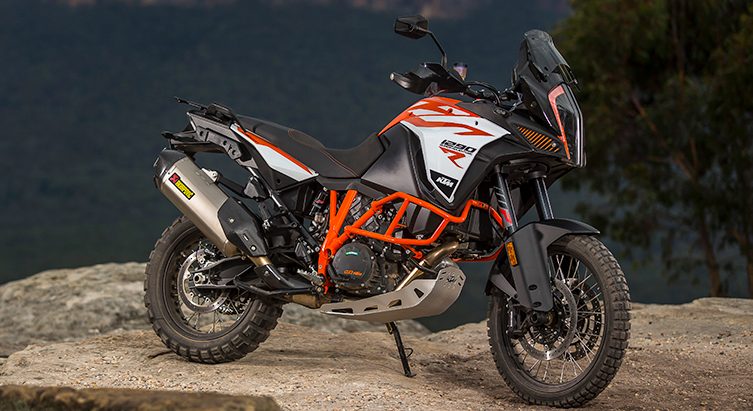


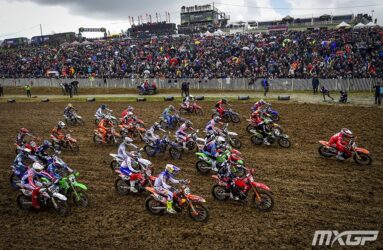


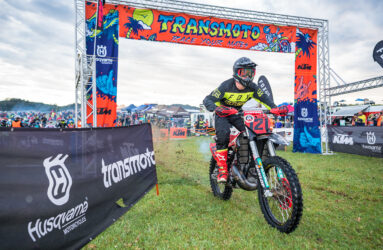


Be the first to comment...